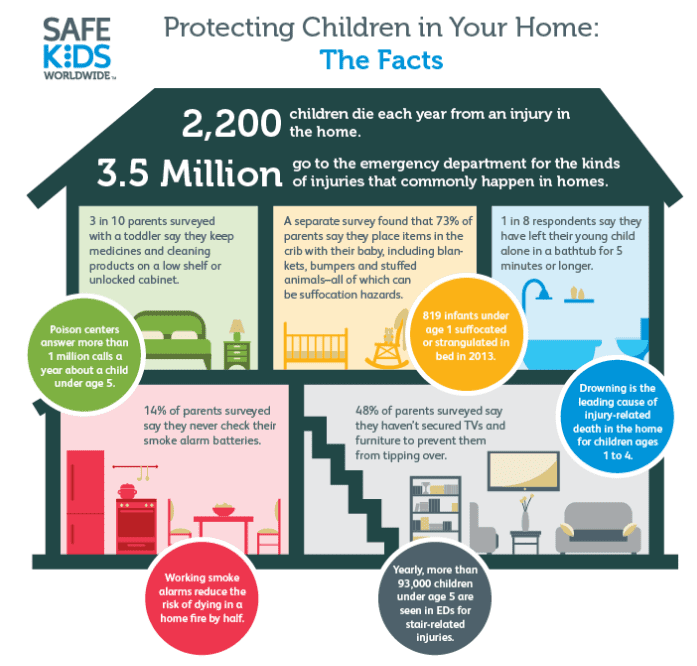Important Steps You Can Take To Prevent Child Injuries
October 6, 2020
Preventable injuries are a major cause of hospital visits in children. According to the CDC, every year in the U.S., approximately 12,175 children and young adults, ages 1 to 19, die from unintentional injuries and over 9.2 million children are treated in emergency rooms for non-fatal injuries. There are many precautionary, life-saving steps we can take to prevent the leading causes of child injury.
Burns—Install and maintain smoke alarms in your home. Develop and practice a family fire escape plan. Set your water heater’s thermostat to 120°F or lower. Use safe cooking practices, such as never leaving food unattended on the stove.
Drownings—Install a four-sided isolation fence, with self-closing and self-latching gates, around backyard swimming pools. Wear life jackets in and around natural bodies of water. Learn CPR and get recertified every two years. Supervise young children at all times around bathtubs, swimming pools, and natural bodies of water.
Falls—Use playground equipment that is properly designed and maintained, and that has a soft landing surface material below. Use home safety devices, such as guards on windows that are located above ground level, stair gates, and guard rails. Supervise young children at all times around fall hazards, like stairs and playground equipment. Wear protective gear when playing active sports, such as wrist guards, knee and elbow pads, and properly-fitting helmets when bicycle-riding or in-line skating.
Poisonings—Store medications and other toxic products such as cleaning solutions in locked or childproof cabinets. Put the poison control number, 1-800-222-1222, on or near every home telephone. Follow directions on the label when giving medication to children. Read all warning labels. Dispose of unused, unneeded, or expired prescription drugs.
Road traffic injuries—Use appropriate child safety seats according to a child’s age and size. If you have a teenage driver, sign an agreement in order to limit risky driving, such as having multiple passengers and driving at night. Transport children in the back seat of your vehicle.
Source: www.cdc.gov/safechild www.cdc.gov/safechild
For information about our preschool or elementary and middle school programs, please call our Admissions team today at 410-312-5233.

